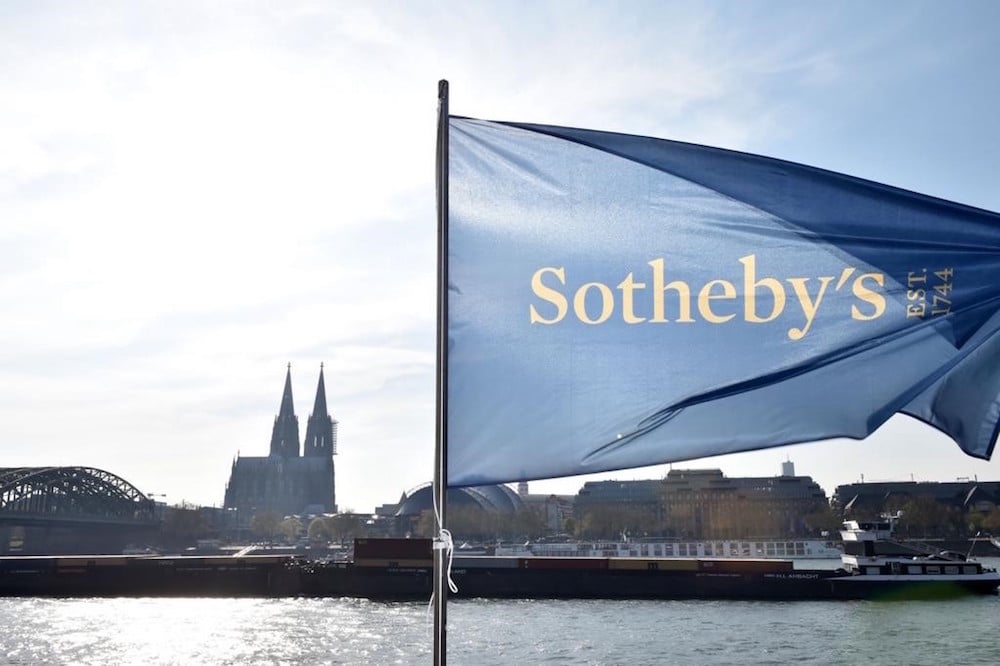Artnet News Pro
Sotheby’s Returns to Germany With a New Cologne Office as It Seeks to Recapture the Country’s Expanding Market
Sotheby's will face stiff competition from the country's well-established regional auction houses.

Sotheby's will face stiff competition from the country's well-established regional auction houses.

Sotheby’s has announced that it is “set to launch auctions in Germany later this year,” noting that it will be the only international auction house to hold sales in the country.
In actuality, the sales will be online, orchestrated from Cologne and with property sourced from in and around Germany, according to a statement from the house.
Details about an eventual Cologne showroom for in-person viewings are forthcoming, but the auction house said it will provide “the perfect backdrop to the spectrum of Sotheby’s auction and private sales offerings.” The move will establish Cologne as Sotheby’s sixth selling location in Europe, joining London, Paris, Geneva, Zurich, and Milan. The sales will include Modern and contemporary art, design, photographs, and additional categories classified as luxury offerings.
Asked about the potential perks of keeping the sales virtual, a representative told Artnet News: “We take the same approach as we would with any other sales at Sotheby’s worldwide locations—making a decision based on what is the best fit for the property on offer.”
The first Cologne sale will be in mid-September and will focus on Modern and contemporary art with work priced between €3,000 and €300,000 ($3,700 to $370,000). In November, Sotheby’s will organize an edition of its “Now” sale series featuring young, up-and-coming artists working across a mix of categories, including fine art, photography, and design. For many of the artists, it will be their auction debut.
The three sales announced for this year “are all most suited to Sotheby’s online platform,” the Sotheby’s representative said, but the house hasn’t ruled out live-format auctions in Cologne for certain works or categories in the future.
Some sources said the house has struggled to fill the gap left by the departure of former managing director and rainmaker Philipp von Württemberg, who resigned in 2018 after two decades to become a private dealer.
Sotheby’s also faces competition from a coterie of smaller but dynamic regional German auction houses, including Grisebach, Ketterer Kunst, Lempertz, and Nagel. Germany’s total auction sales grew three percent last year.
Sotheby’s history in the region dates back to 1969, when it opened an office in Munich and went on to hold sales of 19th-and 20th-century German and Austrian paintings in the late 1980s. There were also the important castle, or “schloss,” auctions, from the collections of Princess of Thurn and Taxis in Regensburg (1993), Margraves and Grand Dukes of Baden (1995), and the Royal House of Hanover at Schloss Marienburg (2005).
In 2010, one of the most expensive works of art ever sold at the time, Alberto Giacometti’s Walking Man, came from the collection of Commerzbank AG in Frankfurt and sold for $104.3 million at Sotheby’s. Other major prestigious German collections that have been the source of major sales over the years have included Helga and Walther Lauffs; Lenz Schönberg; Dürckheim; Gunter Sachs; the Bernheimer Family collection; SØR Rusche; and most recently the estate of Dr. Erika Pohl-Ströher.
“Today, German collectors remain essential to Sotheby’s business, featuring in the list of top ten countries most actively buying and selling in Sotheby’s sales for the past three years,” according to the auction house. “As online sales have grown exponentially over the course of the past year, achieving record results and attracting many new participants, so too an ever-expanding pool of German buyers has embraced the online format: in 2020, 40 percent of German bidders were new to the company, while the number of German buyers in online sales tripled.”
“We are thrilled now to be taking our business forward in the country,” said Sotheby’s managing director of Europe, Middle East, and Africa (EMEA), Sebastian Fahey. “Our new initiative there will enable us to better serve our clients from right across Northern Europe than ever before.”
“Germany has long been an important sourcing center for major works… and it is high time for the country to be transformed into a Sotheby’s selling center too,” said Franka Haiderer, head of Germany and head of business development for EMEA and Asia. She described Cologne as “the beating heart of the art world in this region, and a city surrounded by one of the highest concentrations of collectors and contemporary art institutions in Europe.”
As part of a bigger team, Eva Donnerhack, currently an Impressionist and Modern art specialist, will assume the role of head of sales in Germany, while art historian and contemporary art specialist Barbara Guarnieri will join Sotheby’s as head of Cologne in early July.
Katharina Prinzessin zu Sayn-Wittgenstein, who started her career at Sotheby’s in 1993 in Prague, and who has overseen the Hamburg office since 2003, will be head of Munich in addition to her current position, and will divide her time between the two cities.